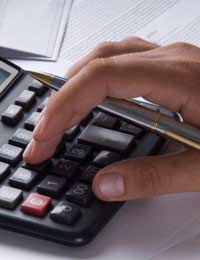What is the Payment on Account and How Can I Reduce It?

The payment on account is an often-overlooked expenditure. Due twice a year, many self-employed people forget to write it into their budget calculations.
It is sometimes possible to have the payment on account reduced. But, unless you are confident that your earnings will fall in the next tax year, this can often be a mistake.
What is the Payment on Account?
The payment on account is a series of two payments made to HM Revenue & Customs (HMRC) over the course of the year by Self Assessment Taxpayers. The total of the two payments is normally equal to your total tax bill for the previous tax year, excluding student loan repayments and Capital Gains tax. The first payment on account is due on the 31 January, and the second is due on 31 July.Why do I Have to Pay it?
The payment on account is designed as a way of reducing the shock of your tax bill at the end of the year. The payments go towards next year’s tax bill – the idea being that you pay your bill in instalments, rather than in one big chunk.In this way, the payment on account is actually quite a sensible system. The downside, however, is that you will still be charged interest (and maybe penalties) if you are late with either of your payments on account, even though you don’t actually owe the money yet.
How Can I Get it Reduced?
It is sometimes possible to have your payment on account reduced. This mechanism is designed for situations in which you expect that your taxable earnings in the next tax year will be lower than they were in the tax year just gone. In these cases, if you just made your payment on account as it was originally calculated, you would probably end up paying too much tax.If you want to have your payment on account reduced, you need to complete and return form SA303. You can get this from your Tax Office, or from the HMRC website. Alternatively, if you complete your tax return online, you can make your application from within the Self Assessment interface.
It is important to note that applications for a reduction in the payment on account must be received by 31 January, otherwise they will not be considered.
Should I Reduce my Payment on Account?
The payment on account obviously quite significantly increases your bill on 31 January. Because of this, there is a temptation to ask to have it reduced, even when you do not expect your next tax bill to be any lower.There are several reasons why this is potentially a bad idea. To begin with, you should remember that you will still be charged interest on underpaid tax. So, if your actual taxable earnings for the next tax year are lower than you tell HMRC you expect them to be on your SA303, you will be charged interest on the difference between the payment on account that you made and the actual amount of tax you should have paid. This can easily add up.
Perhaps just as importantly, though, you should note that you are only putting the problem off until next year. Either way, you will have to pay the tax – so it might well be better to deal with the problem now, rather than later.


Re: Claiming Tax Relief on Mileage
Hi all, advice please. I have started work on PAYE recently in addition to my self employment. As part of my PAYE employment I…
Re: What Does Road Tax Pay For?
You need to positively explain to me how this benefits me in respect of this bill. Your website does not and of course the roads…
Re: What Does Road Tax Pay For?
What do motorists actually get from paying the "road tax" fee? I am fed up with beaueacratric measures, where councellors sit on…
Re: Should I be Paid Mileage Allowance?
Actually, I somewhat disagree with the guidance being provided in this instance. Perhaps when considering ONLY…
Re: Paying for Training Can I Claim Tax Allowance?
I am sending my son privately to have a 'Educational Psychology Assessment' because of timing concerns. Can…
Re: Payment of Pensions
How do I change my state pension from 4 weekly to weekly
Re: How Will My Second Job Be Taxed?
I have 2 jobs cleaner at club on a morning on which I don't pay tax but I work at factory on backshift as cleaner and I get…
Re: How Will My Second Job Be Taxed?
I have a main job salaried at 18,500 per year and a second job at £6.50 per hour working around 30/40 hours per week. How…
Re: What Is A Close Company And How Does It Work?
I am a director in a close company through my leasehold purchase of a flat in a Victorian house, their are 5…
Re: How Will My Second Job Be Taxed?
I will be starting a 24 hr a week job. Plus2nd job at 8 hrs a wk . How much taxwill i pay. Basic rate pay